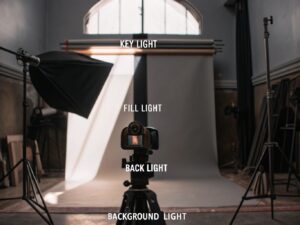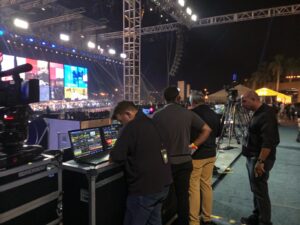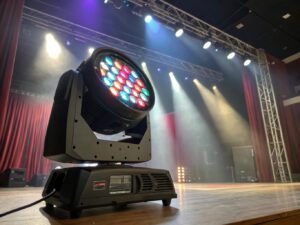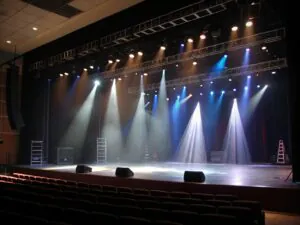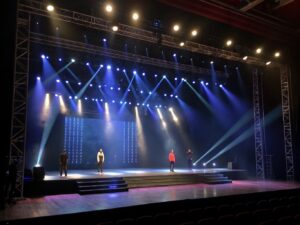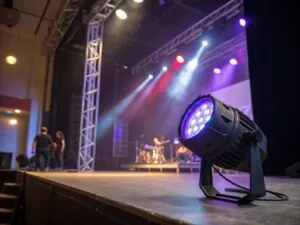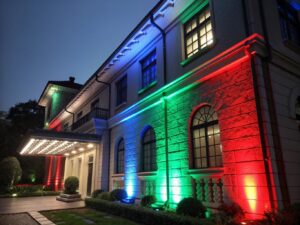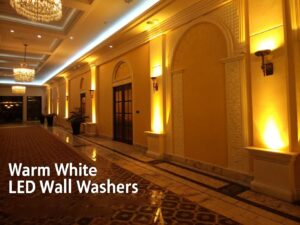
How Do You Choose the Right Stage Lighting for Any Event?
Overwhelmed by the complex world of stage lighting? The wrong choices can leave your event in the dark or ruin the atmosphere. A clear, step-by-step process is the key to success.
To choose the right stage lighting, follow a four-phase approach: First, understand the fundamentals of fixtures and technology. Second, define your event's specific needs. Third, plan the logistics and budget. Finally, execute with a pre-event checklist1 and rehearsal.

After 19 years in this industry, I've seen it all. I’ve seen events transformed into unforgettable experiences by brilliant lighting, and I've seen others fall flat because of poor planning. The difference isn't just about budget; it's about following a logical process. Choosing stage lighting doesn't have to be a mystery. By breaking it down into manageable phases, you can make informed decisions that will make your event shine. Let’s walk through the exact steps you need to take.
Phase 1: What Are the Fundamentals of Stage Lighting?
Do lighting terms like "wash," "gobo," and "DMX" sound like a foreign language? Trying to plan without knowing the basics is like trying to cook without knowing your ingredients.
The fundamentals involve understanding why lighting is critical, knowing the main types of fixtures (key, wash, and effect), and recognizing the difference between modern LED and older conventional lights. This foundation informs every other decision you make.

Why Professional Lighting Can Make or Break Your Event
The first thing to understand is that stage lighting is not just about visibility2; it's about psychology. It tells your audience where to look, what to feel, and what is important. A single, well-placed spotlight can turn a speaker into an authority figure. Soft, warm colors can make a cavernous wedding hall feel intimate and romantic. I remember a corporate conference where the CEO was lit poorly from below; he looked more like a Halloween ghoul than a leader. Professional lighting guides focus and creates the entire mood. It is one of the most powerful and effective tools you have to ensure your event's message and atmosphere land perfectly. Ignoring it is a risk you can't afford to take.
What Are the Building Blocks of a Lighting Rig?
Your lighting system is built from different types of fixtures, each with a specific job. Understanding these three basic categories is essential for planning. Many modern fixtures, especially from us at Monalight, can perform multiple roles, but the core functions remain the same.
| Fixture Type | Main Job | Common Examples |
|---|---|---|
| Key Light | To illuminate the subject clearly (visibility and focus). | Ellipsoidals (Lekos), Profile Spots |
| Wash Light | To cover large areas in an even field of light or color. | PAR Cans, Fresnels, Floodlights |
| Effect Light | To add movement, texture, and excitement. | Moving Heads, Strobes, Gobo Projectors |
Is LED or Conventional Lighting Right for Your Event?
The biggest technical choice you'll face is between traditional (conventional) lamps and modern LEDs. For nearly every event today, LED is the superior choice due to its flexibility and efficiency, but it's important to know why.
| Feature | LED Lights | Conventional Lights |
|---|---|---|
| Power | Very low power consumption. | Very high power consumption, requires dimmers. |
| Heat | Very little heat output. | Extremely hot, can be a hazard. |
| Color | Can create millions of colors instantly (RGBW). | Requires physical plastic color gels to be changed by hand. |
| Versatility | One fixture can be a key, wash, and effect light. | Each fixture typically has only one function. |
| Cost | Higher initial cost, but lower operational cost. | Lower initial cost, but higher power/labor cost. |
Phase 2: How Do You Define Your Event's Lighting Needs?
You know what a PAR can is, but how many do you need for a wedding? A basic understanding is useless without applying it to your specific event, venue, and desired theme.
Define your needs by first analyzing your event type3 to determine the lighting's primary goal. Then, match the power and quantity of your fixtures to the venue's size. Finally, select colors and effects that reinforce your event's theme.
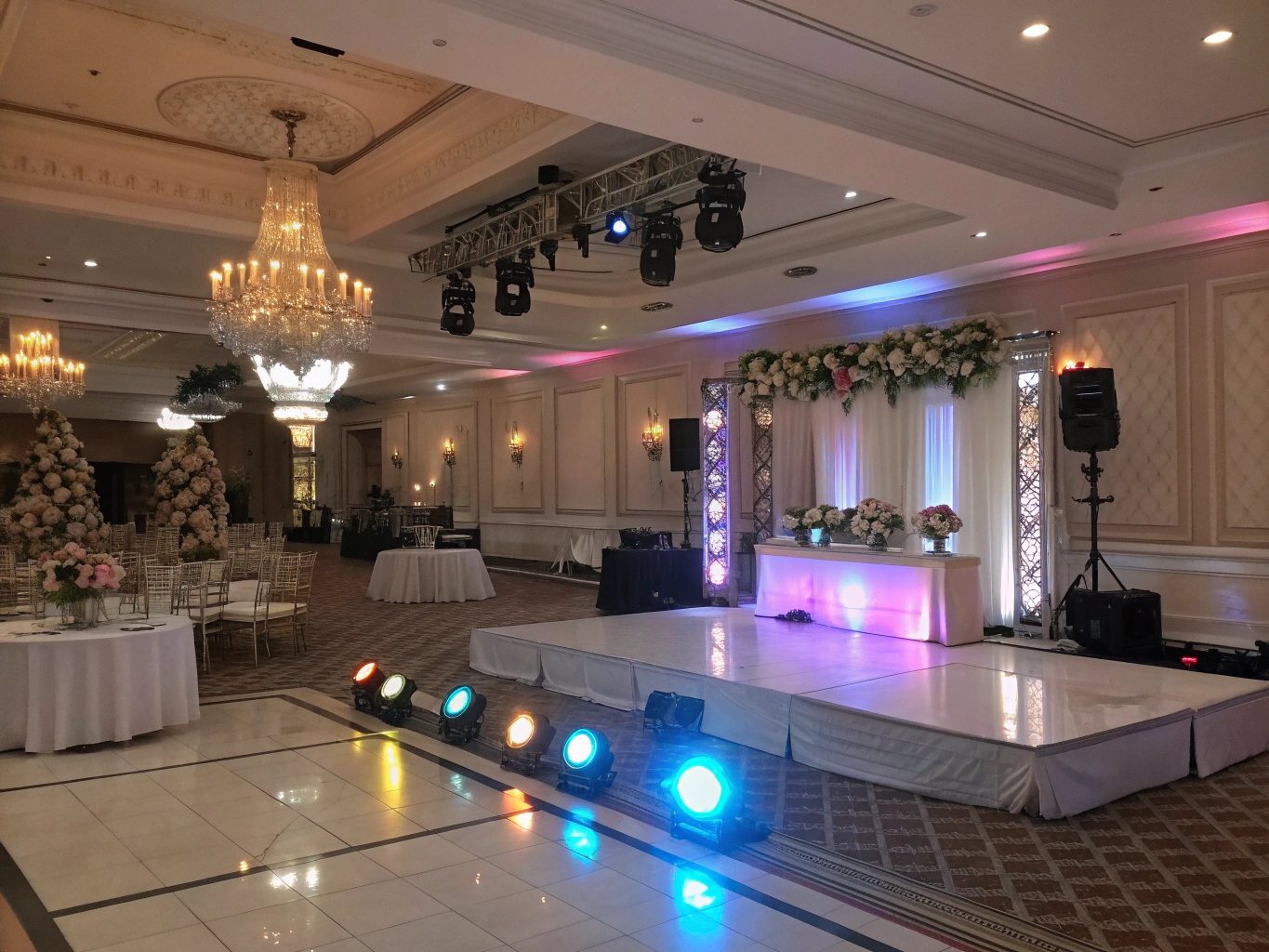
How to Tailor Lighting to Your Event Type
The purpose of your lighting changes dramatically depending on the event. A concert needs energy and movement, while a conference needs clarity and focus. Thinking about this first will guide all your fixture choices. A technician like Nick has to be a master of adapting his approach for every different client he works with.
| Event Type | Primary Lighting Goal | Key Fixtures | Mood/Color |
|---|---|---|---|
| Concert | Energy, excitement, artist focus. | Moving Heads, Strobes, Washes | Dynamic, bold, fast-changing colors. |
| Conference | Speaker clarity, branding, focus. | Ellipsoidals, Fresnels | Clean white, with brand colors as accents. |
| Wedding | Ambiance, romance, highlighting key moments. | Uplighters, Gobo Projectors, Pin Spots | Warm whites, pastels, soft colors. |
| Theater | Storytelling, creating environments, mood. | Ellipsoidals, Fresnels, Cyc Lights | Varies entirely based on the scene. |
How Do You Match Lighting to Your Venue Size?
The size of your venue dictates the power and optics of your lights. The distance from the light to the stage is called the "throw distance." In a small banquet hall with low ceilings, you can use wider-angle, lower-power lights. In a large theater or ballroom, you need powerful fixtures with narrower beams to project bright light over a long distance without washing everything out. There's nothing worse than renting lights that look great on paper but are too weak to even be seen in a large venue. Always consider the scale of the space; it will determine whether you need a 100W fixture or a 400W fixture to do the same job.
How Can You Create a Mood with Color and Effects?
This is where the artistry begins. Color has a profound psychological impact. Warm colors like ambers and reds feel energetic and intimate. Cool colors like blues and lavenders feel calm, sophisticated, or mysterious. Beyond color, you can add texture and branding with gobos. A gobo is a small metal or glass stencil placed inside a spotlight to project a pattern. You can use stock patterns like leaves or stars to add texture to a dance floor, or you can order a custom gobo with a company logo or a wedding couple's initials. Simple uplighting around the perimeter of a room in a specific color is often the most cost-effective way to completely transform a plain space.
Phase 3: How Do You Plan the Logistics and Budget?
You have a vision for stunning lighting, but no idea how to make it happen technically or financially. A great idea without a practical plan for control, budget, and labor is just a dream.
Plan logistics by choosing a control system4 appropriate for your complexity, creating a detailed budget, deciding whether to rent or buy gear, and assessing if you need to hire a professional lighting technician or designer to execute your vision.
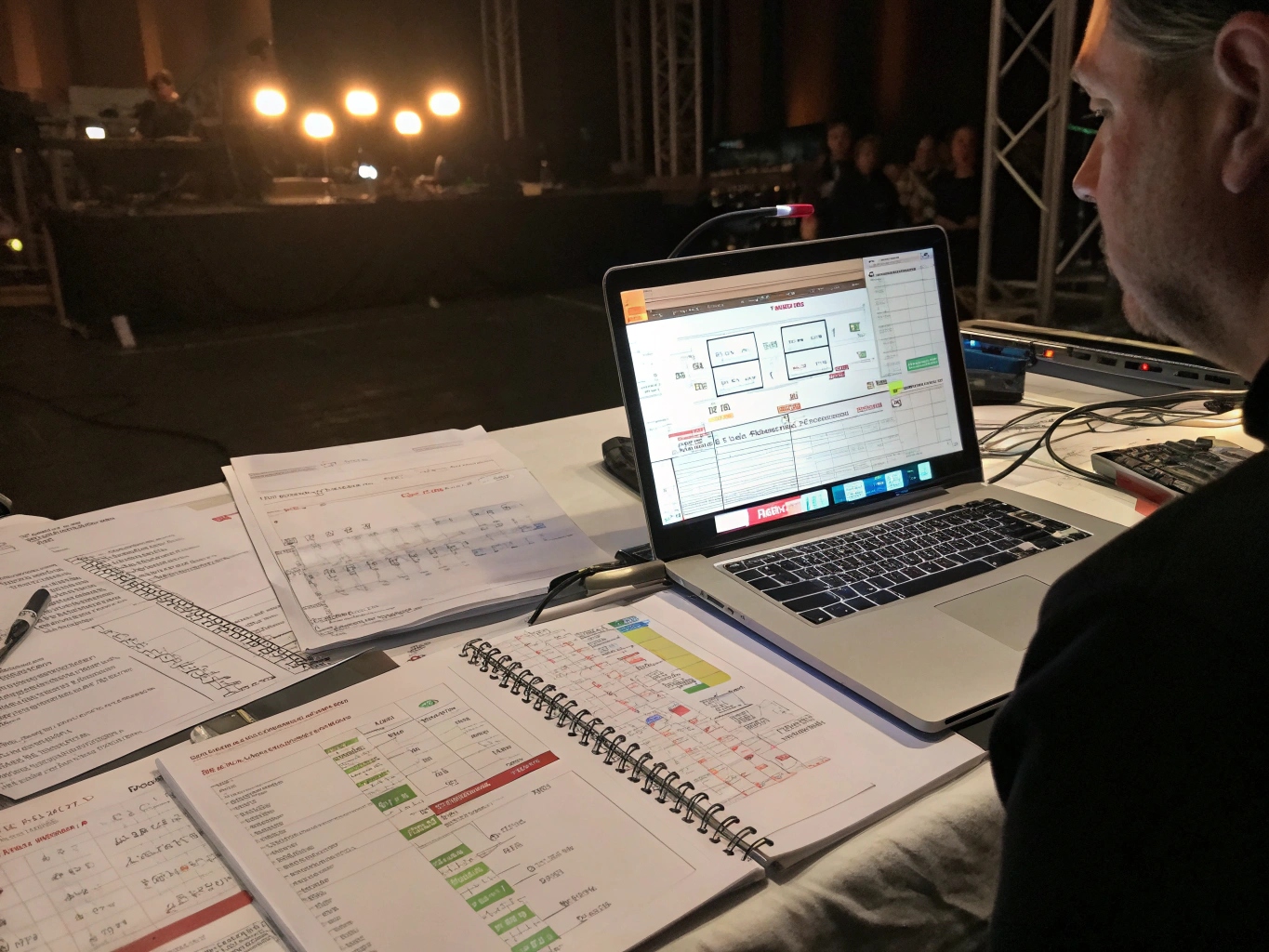
How Do You Choose a Control System?
Your control system is the brain of your lighting rig. For the simplest setups—a few lights that just need to turn on and stay one color—a basic manual fader pack might suffice. However, for any event with multiple cues, color changes, or moving lights, you need a DMX control system. DMX is the universal language that allows a lighting console to talk to each fixture individually. A technician uses a DMX console to program and play back complex sequences, ensuring that the right lights are in the right color and position at the exact right moment. For any truly dynamic event, a DMX system is non-negotiable.
How Do You Create a Realistic Lighting Budget?
Your lighting budget needs to account for more than just the lights themselves. A realistic budget includes four key areas. First is the hardware cost, whether you are renting or buying the fixtures, cables, and trusses. Second is labor: the cost to have a professional design the system, set it up, operate it during the event, and tear it down. Third is expendables, like custom gobos or tape. Fourth, and often forgotten, is power. A large rig may require a separate power distribution system or even a generator. As a rough guide, lighting can represent anywhere from 10-25% of an event's total production budget, depending on its importance to the overall experience.
Should You Rent or Buy Lighting Gear?
This is a practical question that depends on frequency of use. For most one-off event planners, renting is almost always the correct answer. For venues, production companies, or touring artists, buying is a long-term investment.
| Consideration | Renting | Buying |
|---|---|---|
| Best For | One-off events, trying new gear. | Frequent use, permanent installs. |
| Pros | Lower initial cost, access to the latest tech, no storage/maintenance. | Lower long-term cost, gear is always available. |
| Cons | Higher long-term cost, availability can be an issue. | High initial cost, requires storage & maintenance. |
Do You Need to Hire a Professional?
Here’s my simple rule: if your lighting plan involves more than just plugging in a few lights and setting them to a single color, you need a professional. If you are hanging lights from a truss, programming multiple cues, using moving lights, or need to integrate with sound and video, hire a lighting design5er or technician. A pro like Nick not only ensures everything is set up safely and correctly but also brings an artistic eye to the process. Their experience in programming and operating the show live is what creates a truly dynamic and seamless experience. The cost of hiring a pro is almost always outweighed by the quality and peace of mind they deliver.
Phase 4: What is the Pre-Event Execution Checklist?
The trucks are here and the gear is on the floor. An uncoordinated setup can lead to on-site chaos, delays, and critical mistakes. A plan is needed to get from gear to show.
Your pre-event checklist must include coordinating with all other production departments (sound, video, scenery) well in advance and, most importantly, scheduling a full technical rehearsal to program, test, and run through every lighting cue.
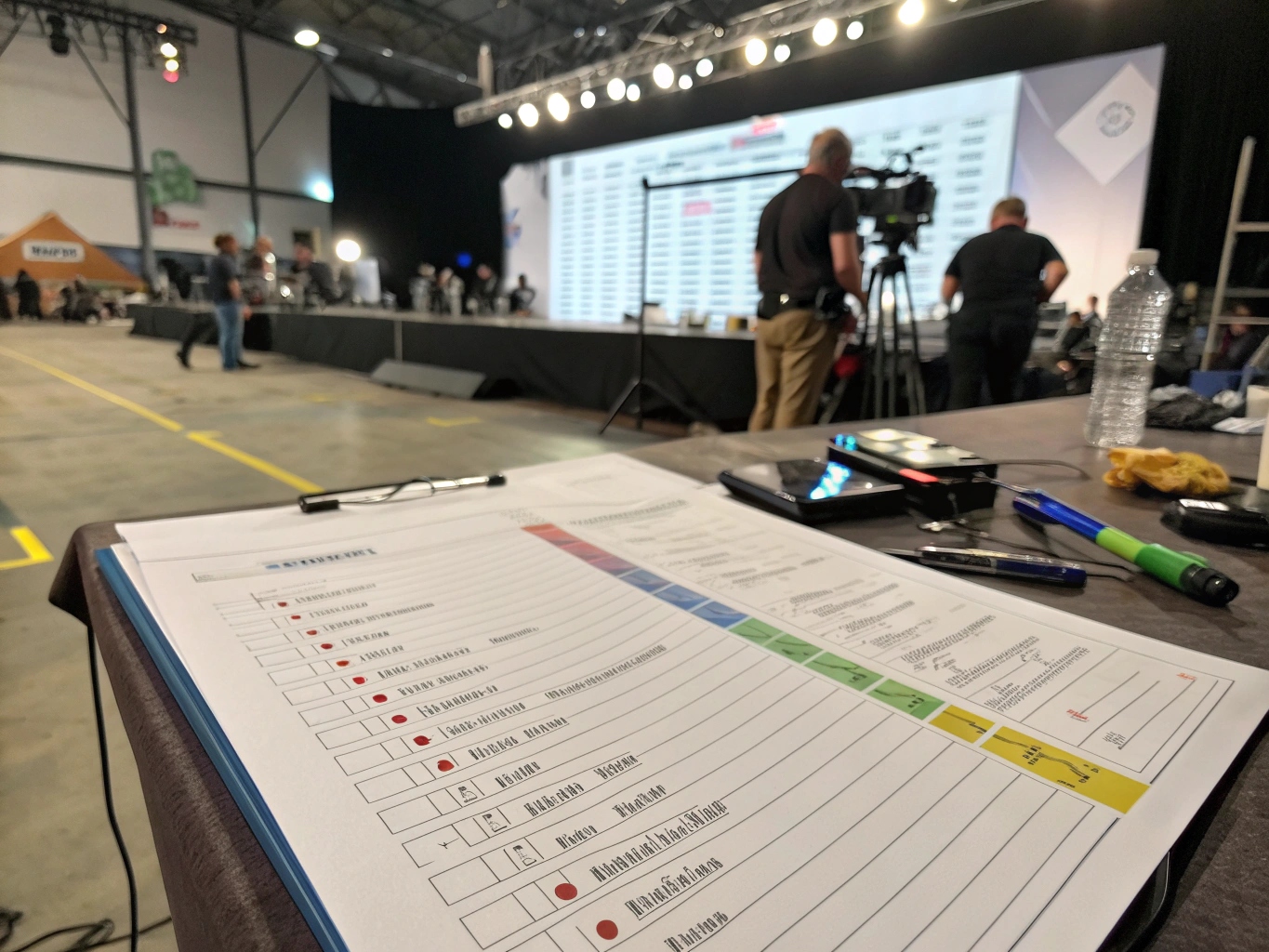
How Do You Coordinate Lighting with Other Departments?
Lighting does not exist in a vacuum. I always start a project by meeting with the sound, video, and scenic departments. Where are the speakers being placed? That affects where I can put a light stand. Where is the projection screen? I have to ensure no lights spill onto it and wash out the image. Where are the lighting trusses being hung? We have to confirm they don't block sightlines or interfere with scenery. Most importantly, we all need to coordinate our power needs to ensure we don't overload the venue's circuits. This early communication prevents disastrous on-site conflicts and ensures a cohesive final look for the event.
Why Is a Full Lighting Rehearsal So Important?
The lighting rehearsal6, or "tech run," is where the magic happens. It's the first time you see all the elements working together. This is when the lighting operator programs every cue into the console—from the opening look, to the CEO's walk-up music, to the ballyhoo at the end. It's when you check every angle, every color, and every focus to make sure it's perfect. It's also when you discover problems—a light that's not working, a focus that's slightly off—and fix them before the audience ever sees them. Skipping a full rehearsal is the single biggest gamble you can take. It’s the difference between a polished, professional show and a sloppy, unpredictable one.
Event Lighting FAQ: What Are Your Top Questions?
Still have some specific questions? Doubts can lead to hesitation and costly mistakes. Getting clear, direct answers to common queries is the final step in building your confidence.
This section answers your most frequent questions about stage lighting, covering everything from real-world costs and common beginner mistakes to power requirements and simple tips for making a big impact on a small budget.

1. How much does stage lighting actually cost?
This varies wildly. A simple uplighting package for a wedding reception might rent for a few hundred dollars. A conference lighting package with speaker specials and branding could be a few thousand. A full concert rig with moving lights and video can be tens of thousands. The cost is driven by the quantity and type of gear, the amount of labor required for setup and operation, and transportation. Always get detailed quotes.
2. What's the biggest mistake beginners make?
The most common mistake is focusing only on color and effects while forgetting about basic visibility. They'll have beautiful, colored walls but the main speaker is standing in a dark shadow. Always start with a good, clean key light on your subject. You can add all the "wow" factor you want after you've ensured the audience can see what's important.
3. How much power do I need for my lights?
This is a critical question. With modern LED lights, power needs are much lower than they used to be. However, a large rig can still require significant power. As a rule of thumb, you should plan for your lighting system to be on its own dedicated electrical circuits, separate from the sound and video systems to avoid interference and tripped breakers. Always ask your lighting provider for their specific power requirements.
4. What's the easiest way to add 'wow' factor on a budget?
Two things: architectural uplighting and gobos. Placing even a handful of LED PARs on the floor and pointing them up the walls in a rich color can completely change the feel of a room for a very low cost. Additionally, a single spotlight with a custom gobo projecting your company's logo or a decorative pattern is a high-impact effect that looks expensive but is very affordable.
5. Can I just use the lights already in the venue?
Maybe, but be cautious. "House lights" are often just for general room illumination and are not designed for stage use. Some venues have a "house plot" of stage lights, but you must check their condition, capabilities, and how they are controlled. Often, they are old, poorly maintained, and not flexible enough for a dynamic event. Always get a spec sheet on what the venue provides before relying on it.
Conclusion
Choosing the right stage lighting is a process. By understanding the fundamentals and following a clear plan, you can transform any event from ordinary to extraordinary, ensuring your vision is seen perfectly.
-
This checklist will help you ensure all lighting aspects are covered before your event. ↩
-
Learn strategies to prioritize visibility in your lighting design for effective audience engagement. ↩
-
Understand how different event types dictate specific lighting needs and styles. ↩
-
Explore different control systems to understand which one suits your event's complexity. ↩
-
Explore the principles of lighting design to create impactful and memorable event experiences. ↩
-
Learn about the significance of a lighting rehearsal in creating a polished event experience. ↩
You may also be interested in:
